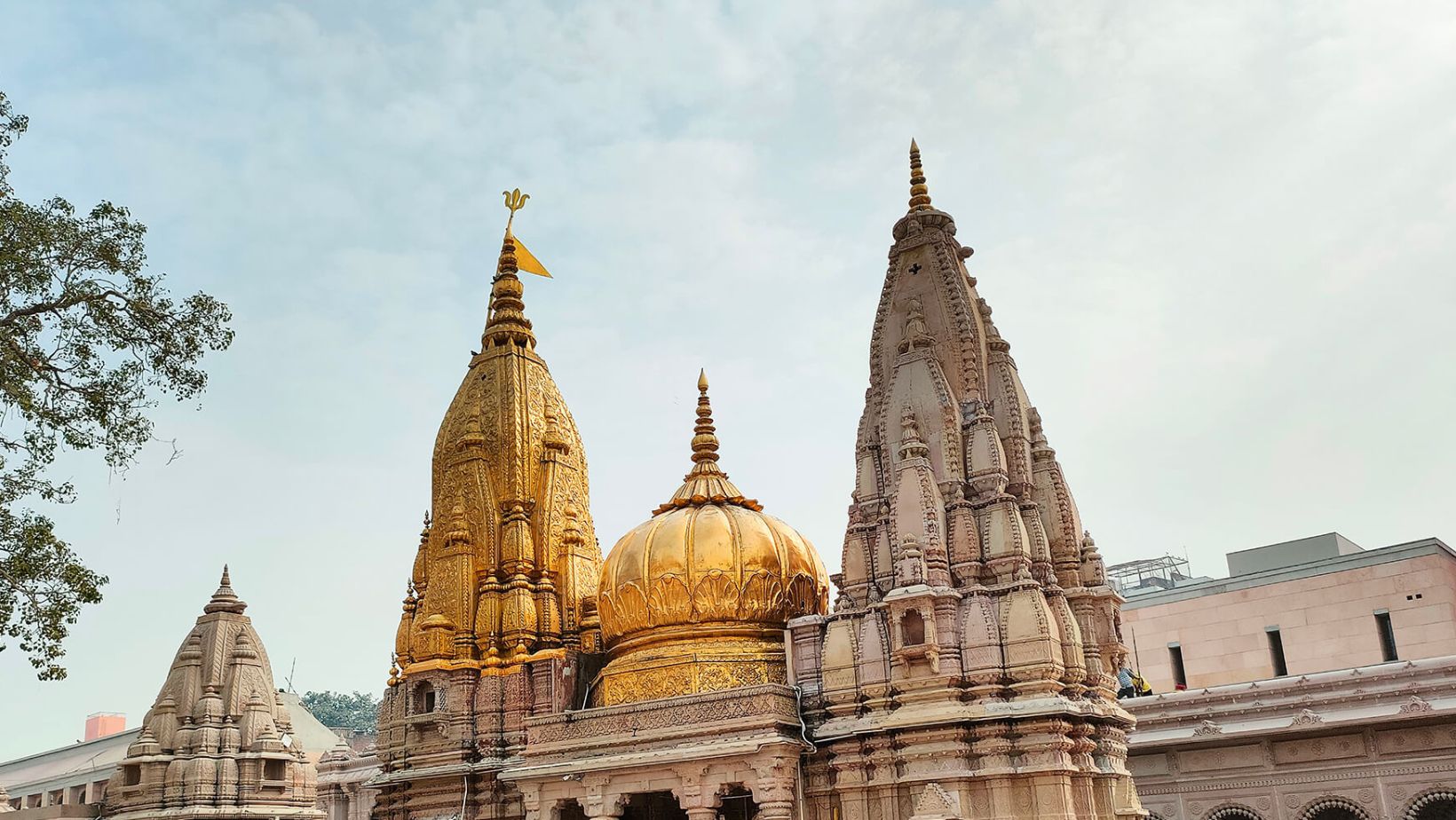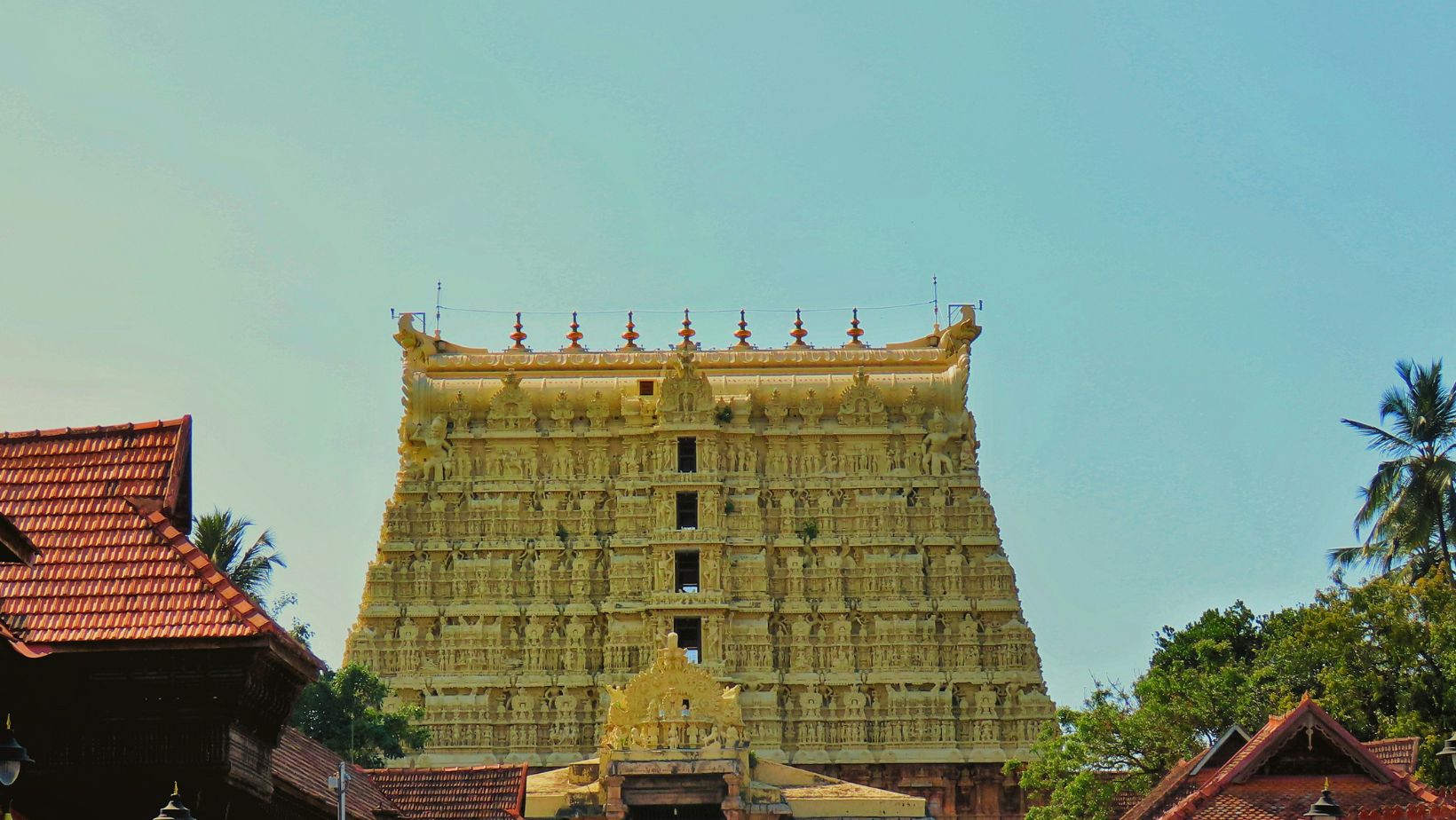Kashi Vishwanath Temple stands majestically in Varanasi, India’s spiritual heart. Dedicated to Lord Shiva, this temple symbolizes centuries of devotion, faith, and spiritual enlightenment. Pilgrims from around the globe flock here, seeking blessings, peace, and liberation. Known for its golden domes and sacred Jyotirlinga, the temple embodies India’s deep-rooted religious traditions. Its historical significance, architectural splendor, and spiritual aura attract millions annually. A visit to Kashi Vishwanath offers profound insights into Hinduism’s essence.
Historical Background
Ancient Origins
The temple’s history dates back thousands of years, referenced in Hindu scriptures such as the Skanda Purana. Legends speak of Lord Shiva himself residing in Kashi, making it eternally sacred. Historians trace its origins to around 3500 years ago, highlighting its ancient religious importance. The temple symbolizes Shiva’s cosmic energy, representing spiritual illumination and eternal life.
Medieval Period
Throughout medieval times, Kashi Vishwanath faced numerous invasions and destructions. Despite these challenges, the temple was repeatedly rebuilt, showcasing the resilience and unwavering faith of devotees. Prominent rulers, including Raja Todar Mal, supported restoration efforts, emphasizing the temple’s significance. Each reconstruction reinforced Kashi’s spiritual authority and cultural heritage.
Modern Restoration
The current temple structure dates to 1780, commissioned by Queen Ahilyabai Holkar of Indore. She initiated extensive renovations, ensuring the temple regained its former glory. Later, Maharaja Ranjit Singh donated gold, enhancing the temple’s splendor by covering its domes. Today, the temple shines brilliantly, reflecting both historical continuity and renewed devotion.
Architectural Splendor
Temple Layout
Kashi Vishwanath Temple features a traditional Hindu architectural style. The temple complex comprises multiple shrines, courtyards, and corridors. The sanctum sanctorum houses the revered Jyotirlinga, accessible through narrow lanes symbolizing life’s complex journey toward spirituality. Intricate carvings decorate the walls, depicting various scenes from Hindu mythology.
Gold-Covered Domes
One of the temple’s most striking features is its gold-covered domes, gifted by Maharaja Ranjit Singh in 1835. These golden domes glitter magnificently under sunlight, symbolizing divine radiance and purity. This luxurious embellishment not only elevates its aesthetic appeal but also signifies deep devotion and reverence.
Sculptures and Carvings
Artistic carvings and sculptures adorn the temple’s interior and exterior. Stone carvings depict Shiva’s various forms, stories from ancient scriptures, and mythological figures. These masterpieces reflect skilled craftsmanship, providing visual storytelling that enhances devotees’ spiritual experiences.
Religious Significance
Importance of Jyotirlinga
Kashi Vishwanath houses one of the twelve sacred Jyotirlingas, representing Lord Shiva’s infinite energy. Worshipping here grants liberation from the cycle of birth and death, according to Hindu beliefs. Pilgrims regard this Jyotirlinga as particularly powerful, believed to offer instant spiritual fulfillment and enlightenment.
Rituals and Practices
Daily rituals form an integral part of temple life. Priests conduct elaborate pujas, aarti ceremonies, and abhisheks, meticulously following ancient traditions. Devotees participate actively, offering prayers, flowers, milk, and holy water. These rituals reinforce spiritual connections, fostering a sense of collective devotion and sacred unity.
Mangala Aarti
Mangala Aarti, performed before dawn, marks the temple’s first worship. This early morning ritual symbolizes awakening divine consciousness. Devotees attend eagerly, believing it purifies their souls and grants divine blessings for the day.
Shringar Aarti
During Shringar Aarti, priests beautifully adorn the Jyotirlinga with flowers, sacred threads, and sandalwood paste. This ritual, filled with devotion and reverence, highlights Shiva’s beauty and grace. Pilgrims witnessing this feel an intimate connection with the deity.
Festivals Celebrated
The temple vibrantly celebrates significant Hindu festivals, drawing massive crowds and enthusiasm.
Maha Shivratri
Maha Shivratri is the most important festival celebrated here. Devotees fast, chant hymns, and perform overnight vigils, worshipping Shiva throughout the night. This celebration symbolizes overcoming darkness and ignorance, promoting spiritual awakening.
Shravan Maas
During Shravan Maas, devotees throng the temple, performing rigorous rituals and fasting. Mondays in this month hold special significance, drawing large numbers of pilgrims. The heightened spiritual energy during this period makes worship exceptionally rewarding.
Pilgrimage and Tourism
Spiritual Tourism
Kashi Vishwanath attracts spiritual seekers worldwide, enhancing India’s cultural and religious tourism. Visitors find tranquility and spiritual rejuvenation, profoundly impacting their inner journeys. The temple’s sacred environment encourages introspection and self-discovery.
Pilgrimage Practices
Pilgrims often bathe in the holy Ganges before entering the temple, symbolizing purification of body and soul. Many undertake rigorous fasting and prayer rituals, believing these enhance their spiritual experience. Pilgrimage here marks a significant milestone in a devotee’s religious journey.
Facilities and Accessibility
The temple administration ensures comfortable visits by providing basic facilities such as drinking water, resting places, and wheelchair access. Several accommodation options near the temple cater to pilgrims’ diverse needs, making their spiritual visit convenient and fulfilling.
Challenges and Conservation Efforts
Crowd Management
With millions visiting annually, managing crowds poses significant challenges. Authorities implement effective crowd-control measures, including queue systems, surveillance, and trained security personnel. These steps ensure safety and an orderly worship environment.
Conservation Initiatives
Efforts are continuously underway to preserve the temple’s structural integrity and artistic heritage. Restoration projects and conservation programs address damage caused by pollution, humidity, and extensive foot traffic. Collaborations with historians and conservationists ensure the temple remains protected for future generations.
Cleanliness Drives
Regular cleanliness drives promote sanitation and environmental awareness among visitors. Volunteers and temple staff actively engage in maintaining hygiene standards. These initiatives support sustainable tourism practices and preserve the temple’s sanctity.
Infrastructure Development
The temple authority invests in infrastructure development to improve visitor experience. Modern facilities, such as electronic ticketing and digital information kiosks, streamline pilgrim movement and enhance overall satisfaction. Such advancements complement traditional worship without compromising cultural authenticity.
Cultural Impact
Influence on Literature and Arts
Kashi Vishwanath profoundly influences Indian literature, poetry, music, and visual arts. Numerous artists and poets, inspired by its spiritual aura, have immortalized the temple in their creations. This cultural legacy continues enriching India’s artistic heritage.
Local Economy
The temple significantly boosts Varanasi’s economy. Local businesses flourish due to high tourist influx, benefiting artisans, shopkeepers, and service providers. This economic vitality fosters regional development, improving livelihoods across the community.
Visiting Tips
Best Time to Visit
October to March offers the most pleasant climate, ideal for visiting Kashi Vishwanath Temple. Avoid visiting during peak festival seasons to escape large crowds. Early mornings and late evenings provide serene worship experiences with fewer visitors.
Dress Code
Visitors must respect the temple’s sanctity by dressing modestly. Wearing traditional Indian attire or conservative clothes ensures smooth entry. Temple authorities strictly enforce these dress codes, emphasizing respect for religious customs.
Photography and Rules
Photography is prohibited inside the temple premises to maintain spiritual sanctity. Mobile phones and electronic gadgets are restricted, requiring visitors to deposit these items before entry. Observing these rules ensures respectful worship and smooth temple operations.
Kashi Vishwanath Temple remains an iconic symbol of India’s spiritual heritage and religious devotion. Its rich history, architectural magnificence, and profound spiritual significance captivate pilgrims and tourists alike. Preserving its legacy requires collective effort, ensuring it continues inspiring future generations. Visiting this sacred temple offers not just religious fulfillment but a deeper understanding of Indian culture and spiritual wisdom.











292cdb
**mindvault**
mindvault is a premium cognitive support formula created for adults 45+. It’s thoughtfully designed to help maintain clear thinking
**breathe**
breathe is a plant-powered tincture crafted to promote lung performance and enhance your breathing quality.